An In-Depth Review of Scuba Diving Tours in Vietnam: A Professional Diver’s Perspective
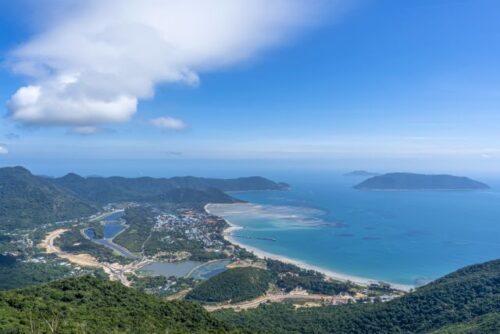
I. Introduction: Why Vietnam is a Must-Visit Destination on My Diving Map
After years of strapping a tank to my back and exploring waters from the Red Sea to the Coral Triangle, I can state one thing with certainty: Vietnam possesses a quiet but powerful allure, a hidden gem that every diver should explore at least once. It’s not just about the feeling of weightlessness, but the moment you realize you are in the midst of a pristine ecosystem, a dance of life that is not found everywhere.
In the international diving community, a Scuba Diving Tour is not just a vacation; it’s an expedition. And Vietnam, with its natural advantages and recent professional development, is gradually becoming a standout name.1 The explosion of diving communities on social media has somewhat revealed this beauty, but only by immersing yourself directly in the water can you fully appreciate its magic.1 Forbes magazine’s recognition of Nha Trang in 2020 was no accident; it was an acknowledgment of enormous potential.1
This article is not merely a travel guide. These are notes and assessments drawn from the personal experience of someone who considers the ocean a second home. I will analyze everything from the foundational knowledge every diver must master, compare Vietnam’s diving “meccas” from a professional standpoint, and, in particular, provide a detailed review of Amadive—an operator that, in my opinion, has truly captured the soul of the diving experience in Con Dao.
Let’s begin this journey, not as tourists, but as explorers.
II. Essential Foundations: What a Diver Must Master Before Every Trip
In the diving community, we live by the mantra that safety comes from knowledge and preparation. The aquatic environment always presents variables, and equipping yourself with a solid foundation is not only about self-protection but also about showing respect for the ocean.1 Below are the core principles that everyone, from beginners to experienced divers, must adhere to.
A. Physical and Psychological Conditioning: The Decisive Factor
A successful dive originates from within you. Never underestimate this.
- Assess Your Physical Condition: The golden rule is to only enter the water when you feel 100% healthy. Cardiovascular issues, high blood pressure, asthma, or any ear, nose, and throat conditions are absolute contraindications for diving.3 Water pressure can exacerbate minor symptoms into serious problems.
- Pre-Dive Nutrition: Your body needs energy for thermoregulation and activity underwater. Diving on an empty stomach will lead to rapid fatigue and an increased risk of hypothermia.4 Conversely, a full stomach can cause discomfort, acid reflux, and increase the risk of seasickness.3 My experience suggests a light, complex-carb-rich meal about 2 hours before diving is optimal. And of course, alcohol is forbidden—it impairs judgment and your ability to handle physiological stress.3
- Mental Stability: Panic is the most dangerous enemy underwater.3 Learn to trust your equipment, your buddy, and especially your guide. Diving is a form of moving meditation; keep your mind calm to truly perceive and enjoy.6
B. Analyzing Diving Formats: Which Option is Optimal for You?
Vietnam offers a diverse “menu” of diving, and choosing the right format will determine the quality of your experience.1
- Snorkeling: This is the perfect starting point, a fantastic way to get acquainted with the world just below the surface without complex skills.8 You will observe the ecosystem in shallow waters (1-2 meters), where sunlight illuminates the coral gardens.8 The advantages are low cost and accessibility for all.11
- Scuba Diving: This is the authentic diving experience, the soul of a Scuba Diving Tour.1 It allows you to explore greater depths, accessing landscapes and creatures that snorkeling cannot reveal. While you don’t need to be an Olympic swimmer, confidence and comfort in the water are necessary.6
- Sea Walking: An interesting technology, particularly popular in Phu Quoc and Cu Lao Cham.12 It allows non-swimmers or those hesitant about breathing through a regulator to directly experience the seabed environment.14 Essentially, you are in a personal “diving bell”—a unique experience, though less sporting than scuba diving.11
C. The Unbreakable Rules: Personal Safety and Environmental Ethics
As guests in a world that is not our own, we have two parallel responsibilities: our own safety and the protection of that fragile environment.
- Absolute Adherence to the Divemaster/Instructor: This rule is non-negotiable, no matter how much experience you have.3 The pre-dive briefing is critically important. Listen to the dive plan, hand signals, and emergency procedures. Always dive with your group and never separate from them.3
- Breathing and Buoyancy Control: The most important rule in scuba diving: NEVER HOLD YOUR BREATH. Holding your breath on ascent, even slightly, can cause a serious lung overexpansion injury as the air expands. Maintain a slow, deep, and steady breathing rhythm. At the end of the dive, ascend slowly—no faster than the smallest bubbles—and always perform a safety stop to allow your body to off-gas excess nitrogen.5
- Be a Responsible Diver: “Leave only bubbles, take only pictures.” Absolutely do not touch anything, especially coral.1 Their protective mucus layer is easily damaged. Maintain a respectful distance from marine life and observe them with reverence.4 Be aware of your impact, from choosing reef-safe sunscreen to avoiding stirring up sediment on the seabed.1
D. The Value of an International Diving Certification (PADI/SSI)
If you are serious about this sport, a diving certification is not an option, but a necessity.
- PADI and SSI are the most reputable training organizations, offering a globally standardized curriculum.1 The course not only teaches you how to use the equipment but also provides in-depth knowledge of physics, physiology, and the diving environment.5
- A certification is your “passport” to dive anywhere in the world. Most reputable dive centers require certification for unguided dives or dives in complex terrains.5
- More importantly, the training process instills confidence, problem-solving skills, and a systematic safety mindset. It transforms you from someone who just “tries diving” into a true diver. This is why professional centers like Amadive always prioritize training.
III. Reviewing Vietnam’s Top Dive Destinations: A Professional Comparison
Vietnam has a coastline with many distinct ecosystems. Here is my assessment of the most prominent dive locations to help you choose the most suitable destination for a Scuba Diving Tour VietNam.
A. Phu Quoc – Vibrant and Accessible

Phu Quoc is an excellent destination for beginners or those traveling with family. The coral ecosystem here, especially in the An Thoi archipelago to the south, is diverse and colorful.11
- Professional Assessment: Phu Quoc’s strength lies in its variety of services, from snorkeling and sea walking to scuba diving.12 Dive sites like Hon Thom and Hon May Rut are relatively shallow and friendly, ideal for courses or those with limited experience.17 However, due to strong tourism development, some areas can be quite crowded.
- Ideal Time: From November to May is the dry season, with calm seas and the best visibility.19 During the rainy season (May – October), diving activities are limited and mainly concentrated in the south.22
B. Nha Trang – The Cradle of Vietnam’s Dive Industry
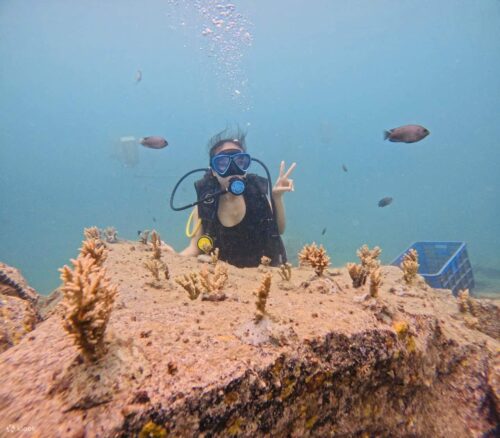
Nha Trang, with Hon Mun at its center, can be considered the birthplace of the professional diving industry in Vietnam.17 It is a marine protected area internationally recognized for its biodiversity.1
- Professional Assessment: Hon Mun is a world-class dive site with diverse topography including walls, caves, and vast coral gardens.21 It is an excellent place for both new and experienced divers. The professionalism of the dive centers here is a major plus.
- Ideal Time: From February to October, the weather is stable, the sea is calm, and the water temperature is warm, providing optimal diving conditions.21
C. Cu Lao Cham – Preserved Beauty
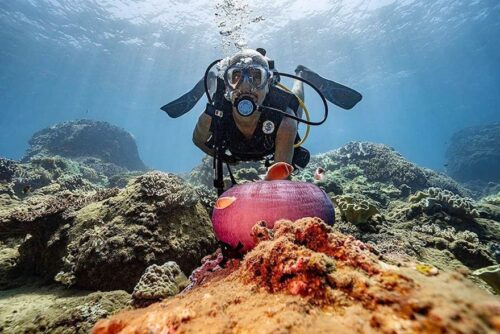
As a UNESCO World Biosphere Reserve, Cu Lao Cham offers a peaceful and well-protected beauty.19
- Professional Assessment: The strength of Cu Lao Cham is its excellent water clarity and relatively intact coral ecosystem.20 Dive sites like Hon Dai and Bai Xep are perfect for underwater photography.13 It is an ideal choice for those who want to combine diving with a cultural experience in Hoi An.
- Ideal Time: From April to September is the season of calm seas and beautiful sunshine.19
D. Con Dao – A Paradise for True Explorers
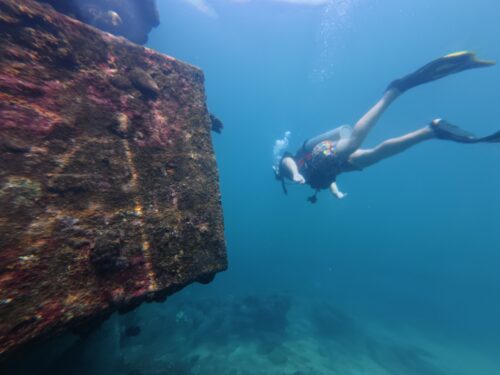
If I had to choose one place to return to again and again, it would be Con Dao. This place offers a pristine beauty, a true sense of “expedition” that is not found everywhere.19
- Professional Assessment: Con Dao is a National Park, so its ecosystem is strictly protected and has one of the highest levels of biodiversity in Vietnam.29 The coral density is thick, and the chances of encountering large marine life such as sea turtles, rays, and barracudas are very high.21 Dive sites like Hon Bay Canh, Hon Tai, and Hon Cau offer world-class experiences with minimal impact from mass tourism.28 This is a destination for true divers, those who seek authenticity.
- Ideal Time: The best diving season is from March to September.20 Although it is the rainy season, the seas in the eastern and southeastern bays (where the main dive sites are) are usually very calm, the water is clear, and this is also the turtle nesting season.20
To explore a special place like Con Dao, choosing an operator who understands the local area and shares a philosophy of respecting nature is crucial. And this is why I want to talk more about Amadive.
>>> Read More: Con Dao island – Thing To Do
IV. Detailed Review of Amadive: The Professional Choice in Con Dao

During a trip to Con Dao, I had the opportunity to experience Amadive’s services, and this is my objective review. For a destination with high conservation value like Con Dao, the role of a professional dive center is extremely important.
A. What Makes Amadive Stand Out?
- Local Expertise: The first thing that impressed me was the knowledge of the guide team. They are not just internationally certified instructors, but true local “marine biologists.”33 The pre-dive briefing was very detailed, not only about safety but also about the specific coral and fish species we were about to see, elevating the experience from “sightseeing” to “exploration.”34
- Equipment Quality and Safety: All equipment is from reputable brands and very well-maintained, something a professional diver always appreciates.33 The dive boat is custom-built, spacious, with enough room for gear setup and relaxation, a world away from converted fishing boats.30 Safety procedures are strictly followed.35
- Operational Philosophy: Amadive focuses on small groups and private tours.33 This not only provides comfort but also minimizes environmental impact, a philosophy I strongly support. They truly offer an exploration experience, rather than a mass-market tour.
B. Analysis of a Typical Fun Dives Itinerary
A day of diving with Amadive is very well-structured and professional.
- 7:30 – 8:00 AM: Hotel pickup, very punctual and convenient.33
- On the Boat: The boat heads to the first dive site. This time is used for a detailed briefing. The guide selects the two best dive sites for the day based on weather and tidal conditions, demonstrating flexibility and experience.
- Dive 1 (approx. 9:00 AM): We were taken to Hon Tai. Underwater, the guide led excellently, pointing out hidden creatures that we might have missed on our own. The visibility that day was fantastic, and we were lucky to encounter a large school of batfish.30
- Surface Interval: The rest period on the boat was very comfortable. Fresh fruit and drinks were thoughtfully provided.
- Dive 2 (approx. 11:00 AM): The second dive site was a coral wall at Hon Bay Canh, offering a completely different topographical experience. The choice of two distinct sites in one tour shows their investment in the customer’s experience.30
- End of Tour (approx. 1:00 PM): Return to the port and transfer back to the hotel.
Services Included: Transportation, custom dive boat, all high-end equipment, international guide, National Park fees, drinks, fruit.33
C. Cost and Booking
- 2-Dive Day Tour (2 Fun Dives): The reference price is around 3,200,000 VND/person. In my assessment, this price is fully commensurate with the quality of service, safety, and unique experience they provide, especially when compared to other international-standard dive centers in the region.
- Multi-day Packages: Amadive offers more economical packages for those who want to explore further, for example, a 3-day, 6-dive package for 9,600,000 VND/person.33
Recommendation: For the most accurate information and best advice, contact Amadive directly. They are very professional in their communication.
Call to Action: If you are a diver looking for a high-class experience in Con Dao, I highly recommend [contacting Amadive directly]. This is a worthy investment for a quality Scuba Diving Tour.
V. Skill Development Path: An Analysis of PADI Courses at Amadive
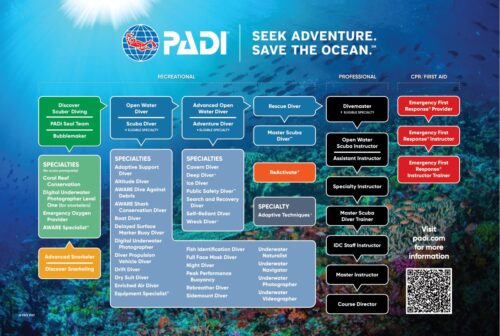
Diving is not just an activity; it’s a journey of continuous learning. Taking courses not only makes you safer but also opens new doors for exploration. Amadive, as a PADI-standard training center, offers a very structured development path.
A. Why Choose Amadive for Skill Enhancement?
- Training Quality: Amadive strictly adheres to the standards of PADI, the world’s most reputable training organization.30
- Experienced Instructors: The instructors here don’t just teach by the book; they impart real-world experience, helping students gain a deeper understanding of the art of diving.35
- Small Class Sizes: Limiting classes to a maximum of 4 students is a commitment to quality, ensuring each person receives the necessary attention and guidance.30
B. PADI Open Water Diver Course – The Strongest Foundation
![]()
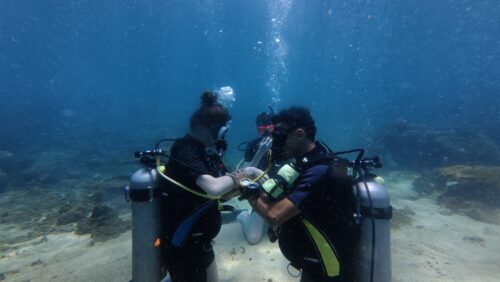
This is the most important course, laying the foundation for your entire diving career.
- Course Analysis: The course lasts 3-4 days, comprising three parts: theory, confined water practice (pool/shallow sea), and 4 open water dives.16 The program is designed to build skills and confidence sequentially.
- Core Value: After the course, you not only receive a certification to dive to 18 meters, but more importantly, you gain the mindset of an independent diver, capable of planning and managing basic problems.16
Call to Action: Invest in your foundation. **** to start your journey in a structured and safe manner.
C. PADI Advanced Open Water Diver Course – Expanding Your Limits
This is the course I always encourage everyone to take right after their Open Water certification. It truly changes the way you dive.
- Course Analysis: This course is not about teaching “super-advanced” skills, but about “experiencing” different types of diving under instructor supervision. It consists of 5 Adventure Dives.35
- 2 Mandatory Dives: The Deep Dive to 30 meters and Underwater Navigation are two fundamental skills that allow you to confidently explore most recreational dive sites worldwide.35
- 3 Elective Dives: This is a great opportunity to discover your interests. I particularly recommend the Peak Performance Buoyancy specialty. Mastering this skill will help you conserve air, move effortlessly, and better protect the marine environment.
- Core Value: This course helps you find your passion within the world of diving (night diving, photography, wreck exploration, etc.) and gives you the confidence to explore sites down to 30 meters, where many more interesting things await.35
Call to Action: Don’t stop at the basics. **** to truly master the underwater world.
D. The Professional Path: Rescue Diver and Divemaster
- PADI Rescue Diver: This is the most challenging but also the most rewarding course. It shifts the focus from “caring for yourself” to “caring for others,” teaching you to recognize, prevent, and manage incidents. It is a turning point in becoming a reliable dive buddy.37
- PADI Divemaster: This is the first rung on the professional ladder, where you learn to lead other divers and assist with training.42
VI. Final Conclusion: Advice from Someone Who’s Been There
Vietnam is a diving stage full of potential, from the vibrancy of Phu Quoc and the professionalism of Nha Trang to the preserved beauty of Cu Lao Cham. Each place offers a valuable experience. However, if you are looking for a profound, pristine, and truly exploratory diving experience, Con Dao is an unmissable choice.
In this context, choosing an operator like Amadive is a strategic decision. They don’t just provide a service; they offer an experience built on a foundation of professionalism, safety, and a genuine love for the ocean.
My advice to you is this: Don’t just see scuba diving as a tourist activity. See it as a journey of discovery—of both the world around you and the world within yourself. Invest in knowledge, skills, and choose professional companions.
The ocean of Con Dao awaits. And with a reliable guide, your journey will undoubtedly be unforgettable.
Amadive Contact Information:
- Website: [amadive.com.vn]
- Hotline/WhatsApp: +849219241
- Email: book.amadive@gmail
- Address: https://maps.app.goo.gl/vDyZfnxpgqEQ18FQ7
- Book a daily dive tour: Click Here
- Register for a course: Click Here
